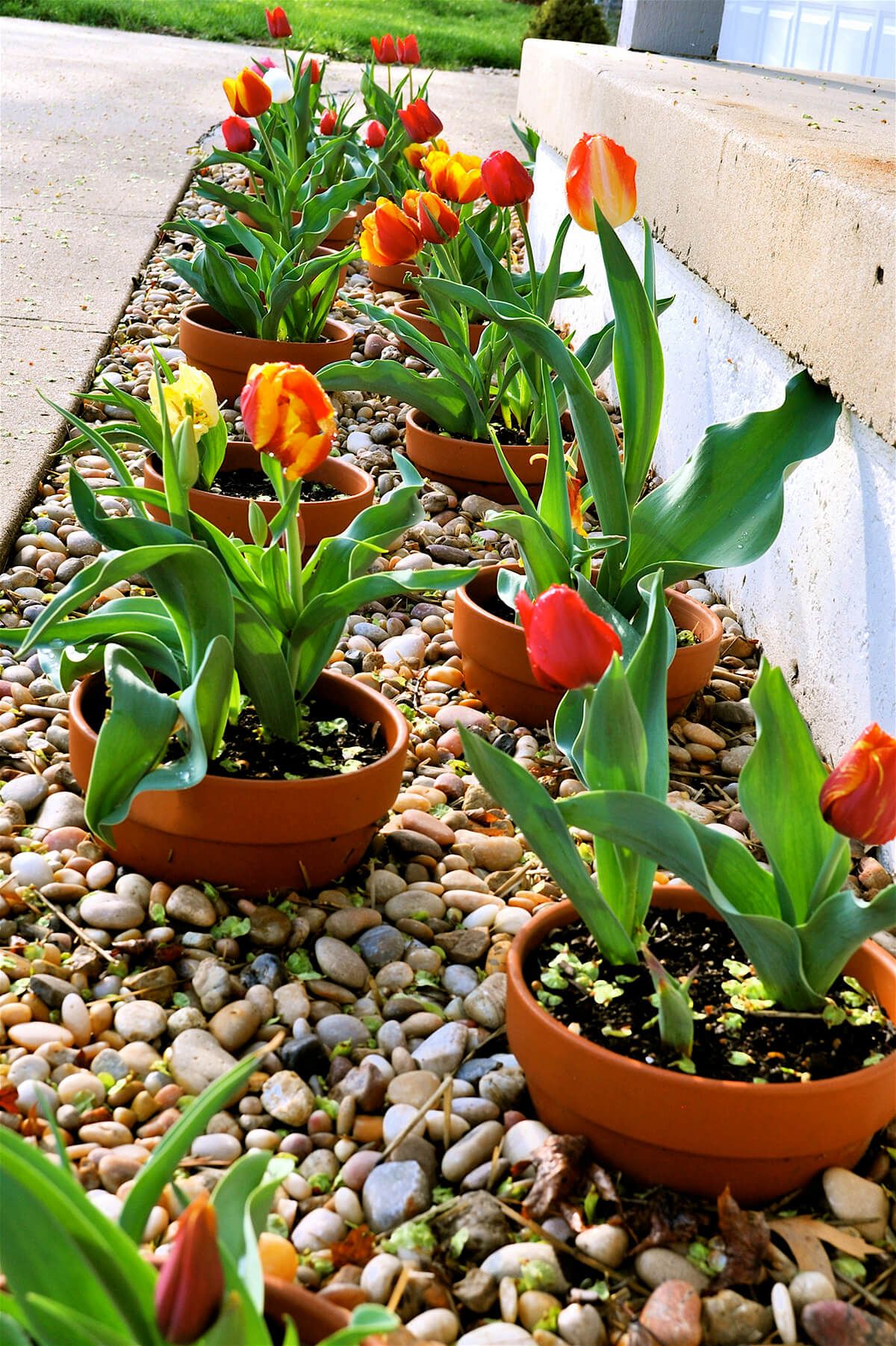In the realm of gardening, where nature’s palette intertwines with human creativity, the art of placing flower pots within flower beds stands as a testament to the harmonious blend of form and function. This practice not only elevates the aesthetic appeal of outdoor spaces but also introduces versatility and flexibility into garden design. By meticulously selecting and arranging potted plants amidst blossoming beds, garden enthusiasts can transform their green havens into vibrant, living masterpieces that captivate the senses and nourish the soul.
Understanding the Fundamentals: Why Pots in Flower Beds?
Integrating flower pots into established flower beds may seem counterintuitive at first glance; however, this technique offers a multitude of advantages. Firstly, it allows for instant gratification, enabling gardeners to introduce color, texture, or height wherever desired without waiting for seeds to germinate or transplanted flowers to establish roots. Secondly, pots provide an opportunity to experiment with plant combinations, effortlessly swapping out or rearranging species as the seasons evolve or personal preferences shift. Moreover, they facilitate targeted care, enabling tailored soil, watering, and fertilization regimens for individual plants, which is particularly beneficial for species with specific requirements. Lastly, pots act as barriers against invasive root systems or soil-borne diseases, preserving the health of the overall bed.
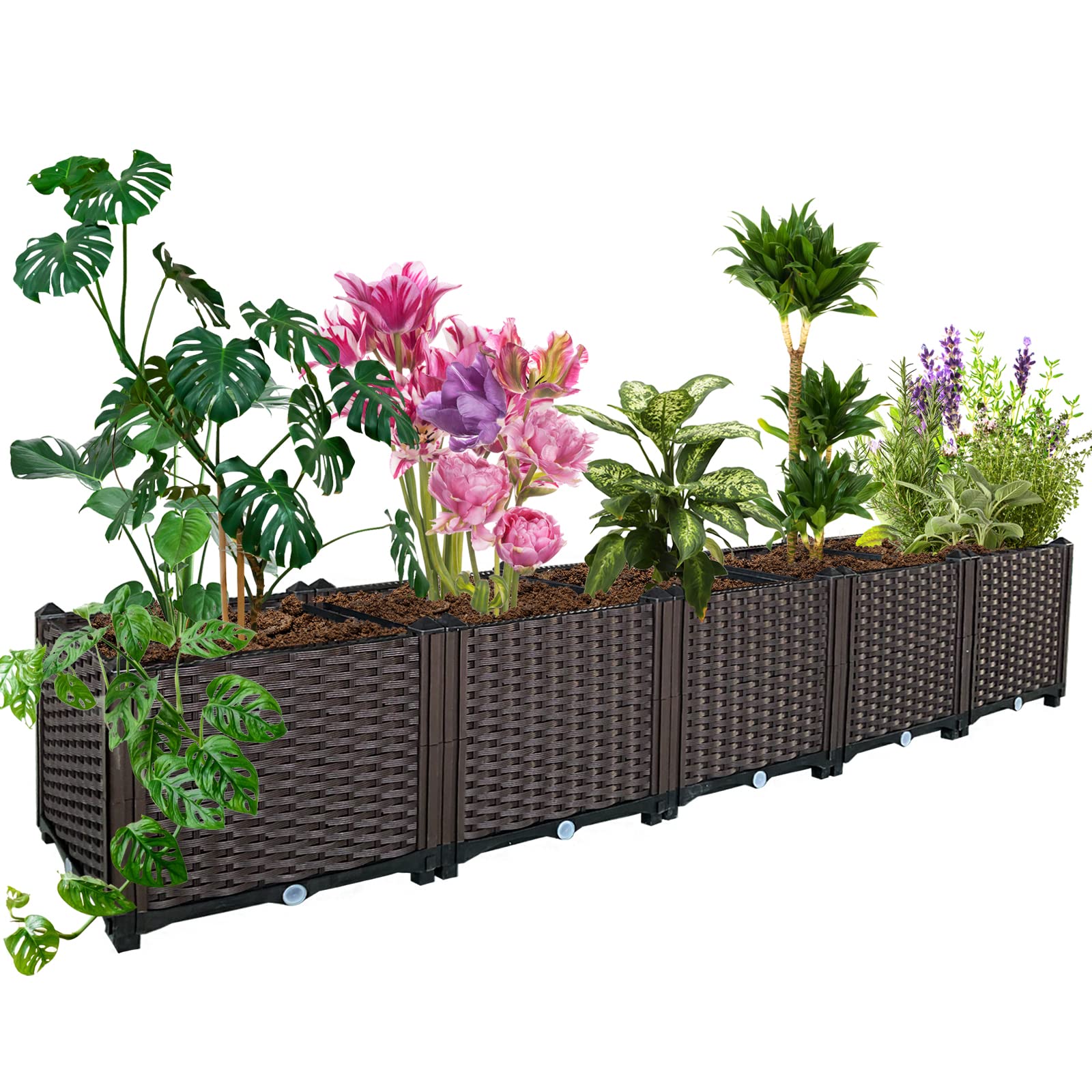
Selecting the Right Pots: A Marriage of Form and Function
The choice of flower pots is a critical element in achieving visual harmony and practicality within the garden setting. Ceramic pots, with their classic elegance and wide range of colors and textures, can infuse a touch of Mediterranean charm or Asian serenity, depending on the design. Terra cotta pots, while porous and requiring more frequent watering, offer a timeless appeal and promote healthy root aeration. For a contemporary twist, lightweight plastic or resin pots mimic natural materials flawlessly while providing durability and ease of handling. When selecting pots, consider their size, drainage capabilities, and how they complement the surrounding flora and the overall garden style. Grouping pots of varying sizes and shapes can create dynamic visual interest, mimicking nature’s diversity.
The Art of Placement: Creating Balance and Focal Points
Strategically positioning flower pots within the flower bed is akin to orchestrating a symphony of colors and forms. Begin by identifying key areas that could benefit from accentuation, such as entryways, corners, or areas of transition between different plantings. Pots filled with bold, towering plants or flowering climbers can serve as focal points, drawing the eye upward and adding vertical dimension. Conversely, clusters of smaller pots nestled amidst groundcover can create pockets of intimacy and encourage exploration. Balancing color and texture is crucial; aim for contrast without overwhelming the senses. Consider the seasonality of your plant choices, ensuring a succession of blooms that will keep the garden lively throughout the year.
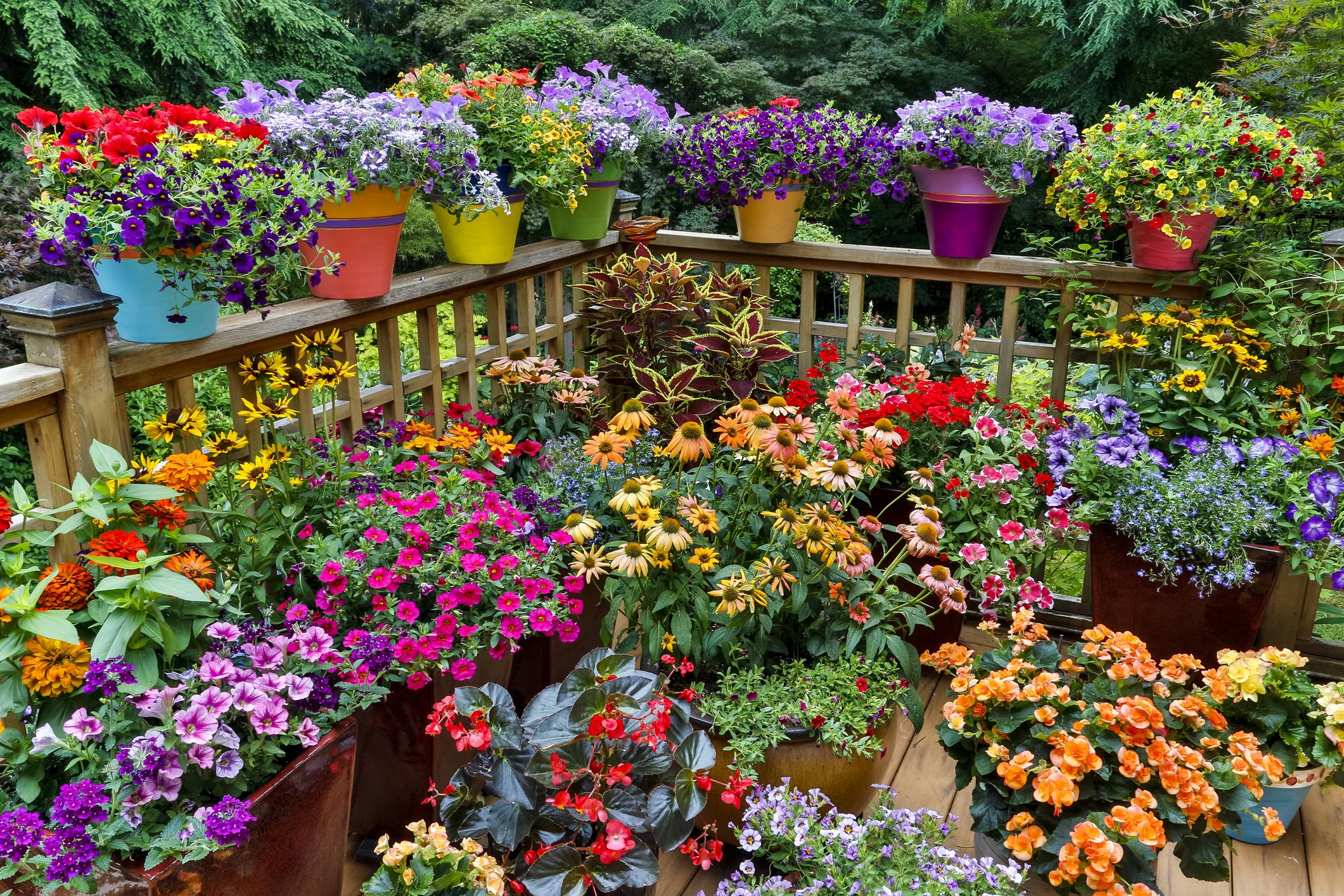
Color Theory and Harmony in Pot Selection
The chromatic dance of flower pots amidst the beds plays a pivotal role in shaping the mood and atmosphere of the garden. Utilize the color wheel as a guide, pairing complementary hues (opposites on the wheel) for high-impact contrasts, such as blue and orange or yellow and purple. Analogous colors (those next to each other on the wheel) create a soothing, harmonious blend, ideal for serene retreats. Monochromatic schemes, using varying shades and tones of a single color, lend sophistication and unity. Remember, the pot itself can contribute to the color story; a neutral pot can allow the plants to shine, while a brightly hued container can serve as an additional accent.
Light and Shadow: Playing with Natural Elements
The interplay of light and shadow greatly influences the visual impact of potted plants within flower beds. Observe the path of sunlight throughout the day, positioning sun-loving species in areas that receive ample light and shade-tolerant varieties where they’ll thrive. Shadows cast by trees or structures can provide relief on hot days and create intriguing patterns, enhancing the garden’s multidimensional feel. Evening lighting, whether through solar-powered lanterns or strategically placed spotlights, can dramatically alter the ambiance, casting a warm glow over your carefully curated pots and extending the enjoyment of the garden into the night.
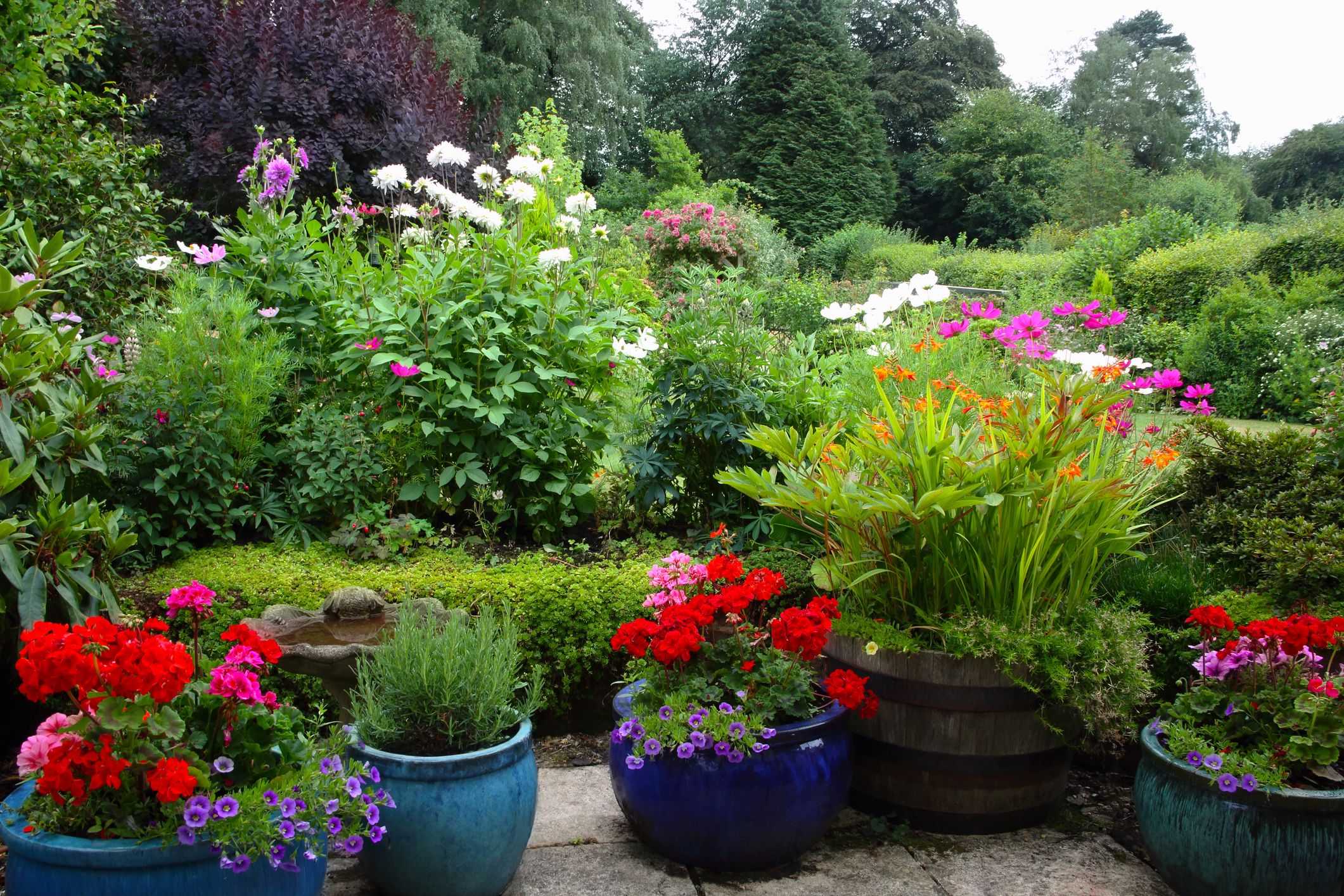
Maintenance Matters: Ensuring Longevity and Beauty
For potted plants to flourish within flower beds, diligent maintenance is paramount. Regular watering, often more frequent than for plants in the ground due to pots’ limited soil volume, is essential to prevent drought stress. Incorporate slow-release fertilizers or compost into the potting mix to sustain growth and vitality. Monitor for pests and diseases, addressing issues promptly to prevent their spread to neighboring plants. Seasonal pruning and deadheading encourage bushier growth and prolonged flowering. Winterizing measures, like moving frost-sensitive pots indoors or insulating them outdoors, ensure the survival of tender species and maintain the garden’s aesthetic during colder months.
Incorporating Texture and Form for Visual Depth
To elevate your garden’s visual appeal, consider not just the colors but also the textures and forms of both the pots and the plants they hold. Mixing smooth ceramic containers with rough-hewn terracotta or weathered wood adds tactile interest. In terms of foliage, pair spiky grasses with round, lush leaves or trailing vines to create contrast and depth. Upright plants like yuccas or cordylines provide structure, while cascading plants like sweet potato vines soften edges and add movement.
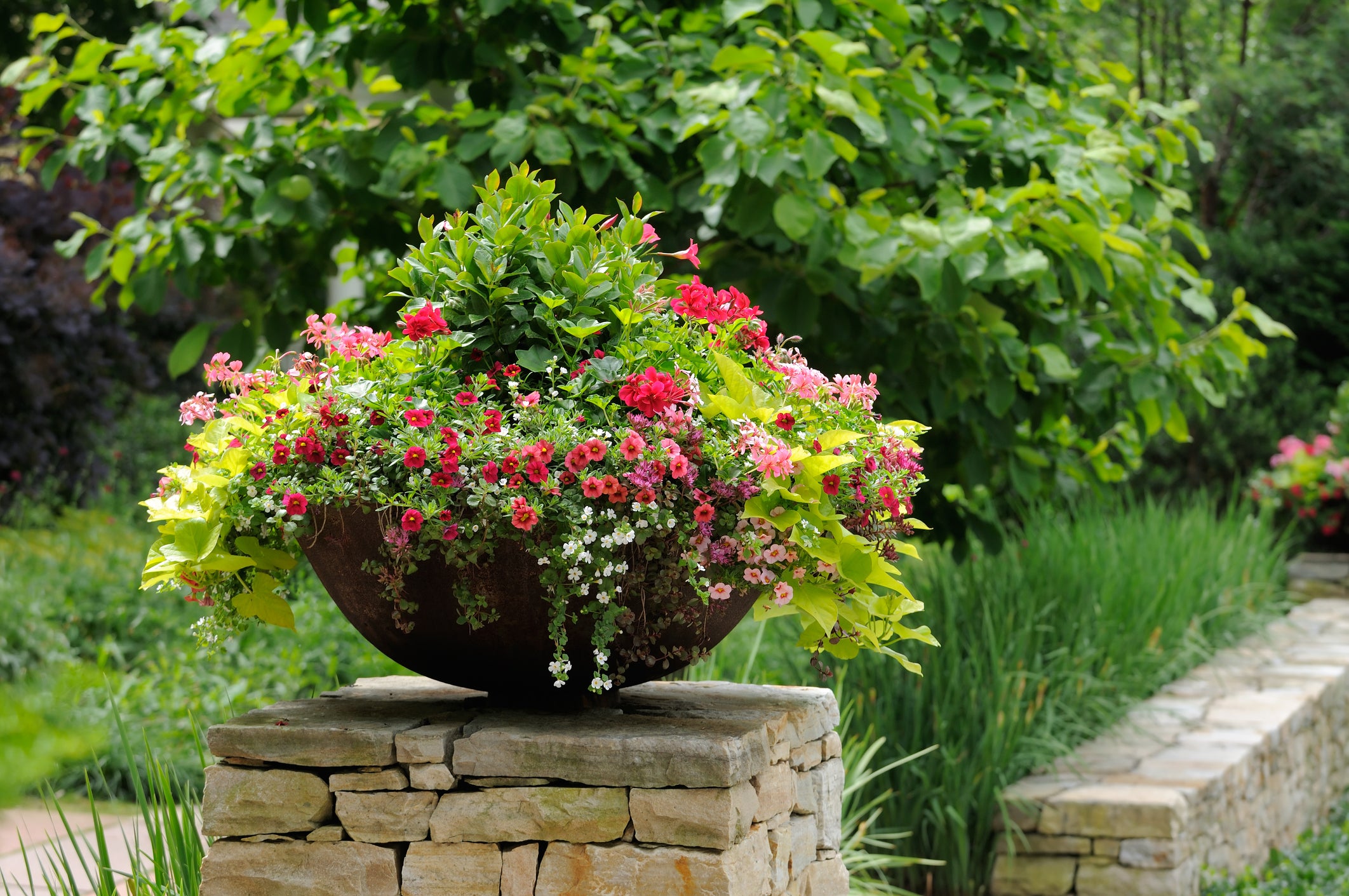
Creative Groupings for Impactful Displays
Arranging pots in clusters rather than singly can amplify their visual impact. Odd-numbered groupings, such as trios or quintets, tend to be more visually appealing. Varying the sizes and heights of pots within a grouping creates a dynamic display—place taller pots at the back or center, with smaller ones graduating forward. Consider the plants’ growth habits when grouping: combine those with similar water and sunlight needs to simplify care, and balance bold, large-leaved plants with delicate, fine-textured ones for visual balance.
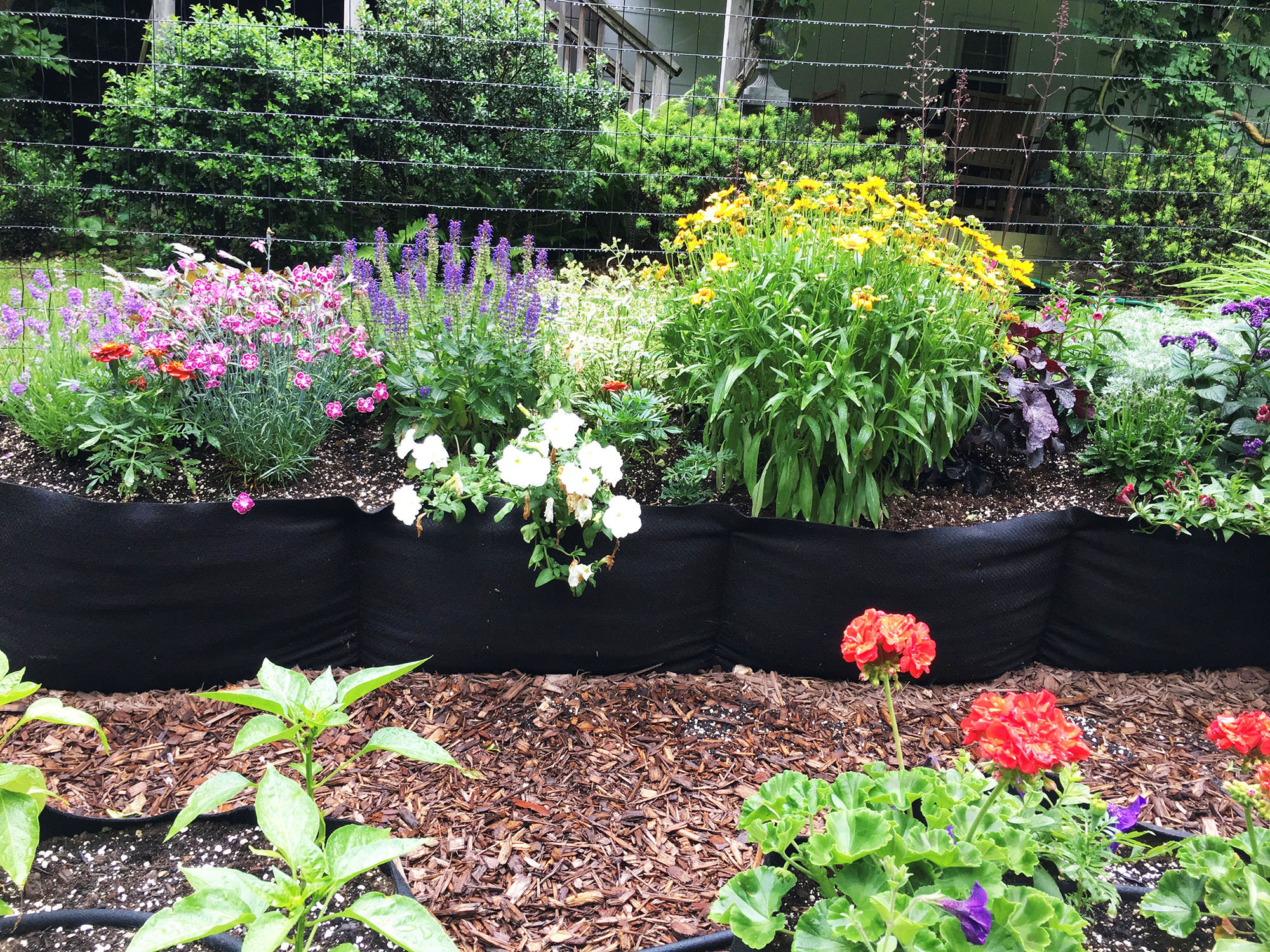
Conclusion: A Symphony of Life in Every Pot
The thoughtful integration of flower pots within flower beds transforms gardens into living tapestries, where every petal and leaf contributes to a grander narrative of beauty and balance. It’s a testament to the gardener’s artistry, blending science and aesthetics to create spaces that inspire, rejuvenate, and connect us with the natural world. Through careful selection, placement, and ongoing care, these portable oases of life elevate outdoor spaces, reminding us of nature’s capacity to enchant and heal. In the dance of garden enhancement, the thoughtful placement of flower pots indeed choreographs a performance of maximum impact, a symphony that resonates with every visitor who pauses to admire its splendor.
